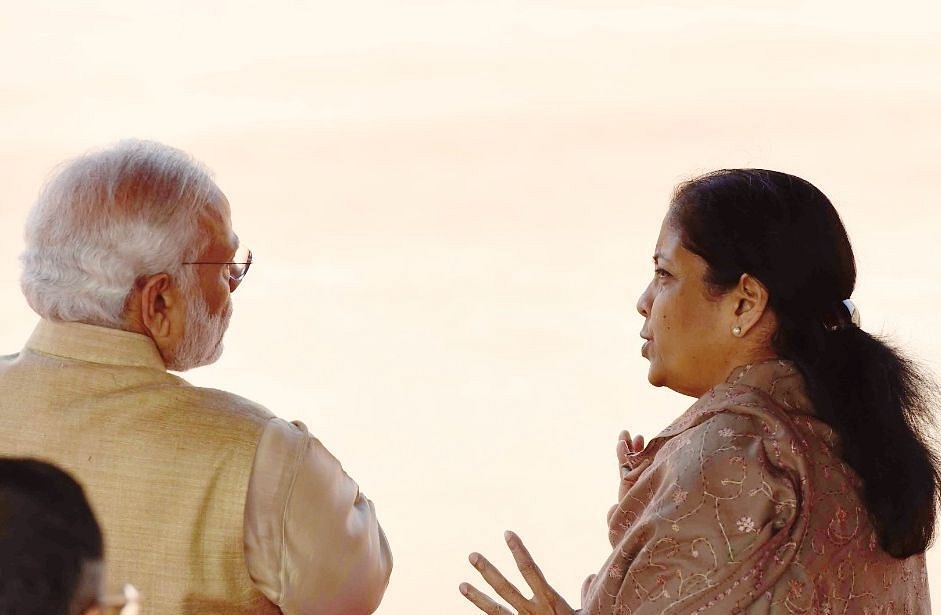
Economy In 2019: Growth Slowdown Was The Low Point, But There Were Many Positives Too
Was 2019 a good year? If you’re talking of growth, ‘no’, but of political will and reforms, it was stellar.
Russell Crowe starrer ‘A Good Year’ is indeed a wonderful movie to watch during holidays – especially the year-end holidays. But many would ask whether 2019 was a good year for the Indian economy and the answer to this question depends on what we’re looking for.
If one looks for growth, then of course 2019 is not the year that they should be looking for as it wasn’t our finest hour. However, it is always the case that when the going gets tough, a political consensus is easier to achieve as far as key economic reforms are concerned.
Therefore, while growth indeed slowed down in 2019, it brought with it the urgency to undertake several measures that would have been otherwise difficult.
One such measure was the corporate tax cut which till date, in my view isn’t just a tax cut but is a big-bang reform. It is a reform as such a big cut has the potential to fundamentally alter the way investments are financed in India.
With firms having more retained earnings, we expect them to use them for fresh investments after deleveraging. Till now, due to low retained earnings of Indian firms due to high cost of capital and taxation, firms had to borrow from banks to finance a major part of their investments.
Consequently, debt financed a major part of the asset compared to equity. This is likely to change going forward and it would have interesting implications for investments and hence growth during the next decade.
The other important move – and one which has been argued for since decades – was the introduction of a cash transfer program in the form of PM Kisan.
That MSPs are distortionary is well known and that it doesn’t provide adequate income support is also recognised. However, nobody showed political will to deviate and adopt a cash transfer programme as an income support mechanism.
This framework enabled by the JAM trinity has interesting implications as it can (and rather must) be extended further to an unconditional poverty alleviation cash transfer programme that replaces fuel, fertilizer and food subsidies. Perhaps, we may see some of it over the next couple of months.
One of the big reasons why PM Modi, despite introduction of many reforms, hasn’t been hailed by some prestigious media outlets as a reformer was because of the ‘lack of privatization’.
For many journalists, somehow, reforms are synonymous with either relaxation of FDI or privatization as they ignore several meaningful and impactful reforms such as the IBC.
However, to their disappointment, the government decided to kickstart one of the biggest privatization/disinvestment drives after over a decade.
Air India is just one part of the story though it has become a symbol of an inefficient public sector enterprise. But to do away with BPCL shows the level of commitment and core belief in limiting the role of public sector enterprises.
It also shows that the criteria for privatization is no longer whether a PSU makes profit or loss, but instead more about efficiency and productivity.
This is a big change in the attitude towards disinvestment and will yield rich dividends over the next couple of years.
The other major developments that have happened is the understanding regarding a need for an overall direct tax overhaul and this will be linked with the Direct Tax Code which each of us is very eager to look into.
The growth slowdown in 2019 has definitely built a consensus regarding the broad areas where government needs to intervene in the short, medium and long terms. It is precisely this reason why one feels that 2019 is indeed a good year as we’ve seen several tough decisions being taken by the government on a wide range of issues.
The fact that the slowdown came at the start of their tenure is also a blessing as this consensus is likely to result in adequate policy response in the start of their tenure which would start showing results over the next couple of years.
Two or three areas of concern, however, continue to persist but they’re more to do with monetary policy and what more needs to be done to ensure it aids our economic recovery.
One can possibly comment on them only after looking at the impact of Operation Twist on GSec yields on Monday.
One thing is for certain: if we do act on consensus and take the necessary steps, then there’s no reason why we can’t sustain a growth rate higher than 7 per cent for the coming decade.
This would make the third decade of the 21st century, where India will finally do justice to its economic potential.
Given the speed at which decisions were taken in 2019, on economic and other issues, one is optimistic that the coming decade will be one where we will spend an adequate amount of time in identifying the factors that resulted in India’s sustained high growth throughout. Perhaps, political will could be one among many such factors.